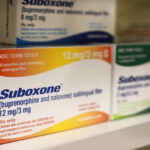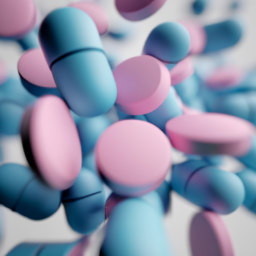Navigating the world of non-statin therapies can be a daunting task for those who cannot take statins. This resource provides helpful information to guide people through the process of finding the right treatment for their individual needs. It covers topics such as lifestyle changes, natural remedies, and alternative medications, so that individuals can make informed decisions about their health. With this guide, individuals can gain the knowledge and confidence to make the best choices for their health and well-being.
Understanding Non-Statin Therapies: Benefits and Risks
Non-statin therapies are medications used to treat high cholesterol levels that are not statins. These therapies are often prescribed when statins are not suitable for a patient or when statins alone are not enough to lower cholesterol levels. Non-statin therapies can be effective in reducing cholesterol levels, but they also come with risks.
The benefits of non-statin therapies include reducing cholesterol levels and reducing the risk of heart attack and stroke. These medications can also help reduce the risk of other conditions, such as type 2 diabetes and kidney disease. Non-statin therapies can also help reduce the risk of developing gallstones.
Non-statin therapies come with risks, however. These medications can cause side effects, such as muscle pain, nausea, and diarrhea. They can also increase the risk of liver damage, kidney damage, and pancreatitis. Some non-statin therapies can also interact with other medications, so it is important to talk to your doctor about any other medications you are taking.
Non-statin therapies can be an effective way to reduce cholesterol levels, but it is important to understand the risks and benefits before starting any medication. Talk to your doctor about the best option for you and make sure to follow their instructions carefully.
Exploring Alternatives to Statins: Pros and Cons
Statins are a class of drugs used to lower cholesterol levels in the body. They are the most commonly prescribed medications in the United States, and have been used to reduce the risk of heart attack and stroke. While statins have been proven to be effective in reducing cholesterol levels, they can also have some serious side effects, including muscle pain, liver damage, and increased risk of diabetes. For this reason, many people are looking for alternatives to statins.
The most common alternatives to statins are lifestyle changes, such as diet and exercise. Eating a healthy diet and exercising regularly can help reduce cholesterol levels naturally, without the need for medication. This approach can be beneficial for those who are not able to take statins due to side effects, or for those who are looking for a more natural approach to lowering their cholesterol.
In addition to lifestyle changes, there are also several natural supplements that can be used as alternatives to statins. These supplements are often derived from plants and herbs, and are believed to have cholesterol-lowering properties. Examples of these supplements include red yeast rice, policosanol, and omega-3 fatty acids. While these supplements may be effective in reducing cholesterol levels, it is important to note that they are not regulated by the FDA and may not be as safe or effective as statins.
Finally, there are several prescription medications that can be used as alternatives to statins. These medications are often referred to as “statin alternatives” and can be used to reduce cholesterol levels without the side effects associated with statins. Examples of these medications include ezetimibe, fibrates, and bile acid sequestrants. While these medications may be effective in reducing cholesterol levels, they can also have their own side effects, so it is important to discuss them with your doctor before taking them.
In conclusion, there are several alternatives to statins that can be used to reduce cholesterol levels. These alternatives include lifestyle changes, natural supplements, and prescription medications. While these alternatives may be effective in reducing cholesterol levels, it is important to discuss them with your doctor before taking them, as they can have their own side effects.
Exploring Natural Alternatives to Statins
Statins are a type of medication used to lower cholesterol levels in the body. They are commonly prescribed to people with high cholesterol, as well as those at risk of developing heart disease. While statins are effective in reducing cholesterol levels, they can also have some serious side effects, including muscle pain, liver damage, and increased risk of diabetes.
For those looking to reduce their cholesterol levels without the use of statins, there are a number of natural alternatives that can be explored. Diet and lifestyle changes are often the first step in managing cholesterol levels. Eating a healthy diet, low in saturated fat and high in fiber, can help to reduce cholesterol levels. Additionally, increasing physical activity and reducing stress can also help to lower cholesterol levels.
In addition to lifestyle changes, there are a number of natural supplements that can be taken to help reduce cholesterol levels. Plant sterols and stanols are compounds found in certain plants that can help to reduce cholesterol levels. Fish oil supplements are also beneficial, as they contain omega-3 fatty acids, which can help to reduce cholesterol levels. Red yeast rice is another natural supplement that has been shown to reduce cholesterol levels.
Herbal remedies can also be used to help reduce cholesterol levels. Garlic, ginger, and turmeric are all herbs that have been shown to help reduce cholesterol levels. Additionally, some studies have found that consuming green tea can help to reduce cholesterol levels.
Finally, there are a number of vitamins and minerals that can help to reduce cholesterol levels. Vitamin B3, or niacin, has been shown to help reduce cholesterol levels. Additionally, vitamin C, vitamin E, and folic acid can all help to reduce cholesterol levels.
Exploring natural alternatives to statins can be a great way to reduce cholesterol levels without the use of medication. However, it is important to speak with a doctor before beginning any new supplement or herbal remedy, as some of these can interact with other medications. Additionally, it is important to remember that lifestyle changes, such as eating a healthy diet and exercising regularly, are the most important steps in managing cholesterol levels.
Evaluating the Cost of Non-Statin Therapies
Evaluating the cost of non-statin therapies is an important part of making decisions about which treatments to use for patients with cardiovascular disease. Non-statin therapies are drugs or treatments that are used to reduce cholesterol levels in the blood, but are not statins. Statins are a class of drugs that are commonly used to reduce cholesterol levels.
Non-statin therapies can include lifestyle changes, such as diet and exercise, as well as medications, such as niacin, fibrates, bile acid sequestrants, and ezetimibe. Each of these therapies has its own associated costs, and it is important to evaluate these costs in order to make an informed decision about which therapy is best for a particular patient.
The cost of non-statin therapies can vary widely, depending on the type of therapy and the specific drug or treatment being used. For example, lifestyle changes, such as diet and exercise, are generally less expensive than medications. Additionally, the cost of medications can vary depending on the brand, the dosage, and the form (pill, liquid, etc.).
When evaluating the cost of non-statin therapies, it is important to consider not only the initial cost of the therapy, but also the long-term costs. For example, lifestyle changes, such as diet and exercise, may have a lower initial cost, but they may require ongoing effort and commitment in order to be effective. Additionally, medications may have a higher initial cost, but they may be more effective in the long run and require less effort to maintain.
It is also important to consider the potential side effects of each therapy when evaluating the cost. Some non-statin therapies may have more serious side effects than others, and these should be taken into account when making a decision about which therapy to use.
Finally, it is important to consider the cost of the therapy in relation to its effectiveness. Some therapies may be more expensive, but they may also be more effective in reducing cholesterol levels. In this case, the higher cost may be worth it in order to achieve better results.
Evaluating the cost of non-statin therapies is an important part of making decisions about which treatments to use for patients with cardiovascular disease. It is important to consider the initial cost, the long-term costs, the potential side effects, and the effectiveness of each therapy in order to make an informed decision.
Identifying Potential Side Effects of Non-Statin Therapies
Non-statin therapies are medications used to lower cholesterol levels and reduce the risk of cardiovascular disease. These medications work by blocking the production of cholesterol in the liver, increasing the breakdown of cholesterol in the body, or preventing the absorption of cholesterol from the diet. While non-statin therapies are generally well-tolerated, they can cause side effects in some people.
The most common side effects of non-statin therapies are gastrointestinal in nature. These can include nausea, diarrhea, abdominal pain, and constipation. Other side effects may include headache, dizziness, and fatigue. Some people may also experience muscle pain or weakness, which can be a sign of muscle breakdown.
More serious side effects are possible with non-statin therapies, although they are rare. These can include liver damage, anemia, and pancreatitis. People taking non-statin therapies should be aware of the signs and symptoms of these conditions and seek medical attention if they experience any of them.
People taking non-statin therapies should also be aware of the potential for drug interactions. Non-statin therapies can interact with other medications, including some antibiotics, antifungals, and HIV medications. People taking non-statin therapies should inform their doctor of all medications they are taking, including over-the-counter medications and supplements.
Finally, people taking non-statin therapies should be aware of the potential for allergic reactions. People who are allergic to any of the ingredients in the medication should not take it. People who experience any signs of an allergic reaction, such as hives, rash, or difficulty breathing, should seek medical attention immediately.
In summary, non-statin therapies are generally well-tolerated, but they can cause side effects in some people. The most common side effects are gastrointestinal in nature, but more serious side effects, drug interactions, and allergic reactions are possible. People taking non-statin therapies should be aware of the potential for these side effects and seek medical attention if they experience any of them.
Navigating the world of non-statin therapies can be a daunting task, but it doesn’t have to be. With the right resources and information, people who can’t take statins can find the best treatment options for their individual needs. This resource provides an overview of the various non-statin therapies available, as well as tips for selecting the right one for you. With this information, you can make an informed decision about your health and take control of your cardiovascular health.











